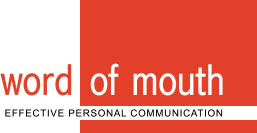Polish your English pronunciation
March 3, 2015
Do you sometimes have to repeat yourself when you speak? Are you creating poor impressions because of the way you speak? Good clarity of speech is fundamental so you can communicate your spoken message with ease and create positive and lasting impressions on others. Whether you are a native or non-native speaker of English, here are three tips to assist you to start polishing your English pronunciation:
Slow Your Speech Rate
English pronunciation is compromised in most fast speakers, even native speakers. Is your speech rate generally fast and/or do you speed up when you are under pressure or speak with certain people? Listen to news readers, radio announcers, politicians, senior business people, all of whom are in the business of communicating. Most of them speak using a moderate speech rate and as a result, we do not have to listen too hard to understand their message.
Start your practice by reading aloud at a moderate rate (like a newsreader). Add in appropriate pauses between your ideas. Record yourself using the voice recorder you likely have on your smart phone. Move this practice into monologue contexts where you can choose a topic and talk to yourself for several minutes. Record yourself again and judge your performance. Could you speak at that pace in the ‘real-world’? Next try and integrate this practice into everyday conversations, face-to-face and on the phone for longer periods.
Work the Final Consonants
Consonants are sounds such as ‘m’, ‘p’, ‘ch’, s’. Making these sounds clearer at the ends of words in English, means it is easier for the human ear to hear individual words and listeners do not have to work so hard to decipher your message.
Start your practice using a highlighter pen to mark the consonants at the ends of words in a piece of written text, for example a short newspaper article. Then try reading it aloud, working your lips and tongue harder when you come to one of the highlighted sounds to pronounce the final consonants clearly. It is OK at this point if it sounds a little over done. Now see if you can do the same thing with a piece of unmarked text. Then move into monologue and conversation practice as above. Combine the slow pace with the clear final consonants and record yourself. Continue to focus your efforts to integrate these objectives into more and more everyday speaking contexts.
Open your Mouth
Opening your mouth by dropping your lower jaw and increasing the space between your teeth when you speak adds clarity to English pronunciation and helps you to project your voice. Fast speech rate will make this more difficult so you may need to work on step 1 above first.
Start your practice by doing five wide mouth opens that you can hold for five seconds each. This will stretch out your masseter muscles that open and close your mouth. Try reading newspaper headlines or say some short phrases and open your mouth a little more at the places it naturally opens. This will happen more on the vowels and diphthongs (gliding two vowel combinations), for example ‘ay’, ‘or’, ‘ah’. Use a mirror to check that you are achieving greater opening and allay your fears that it might look a little odd to people you speak with. Again, move your practice into reading aloud, monologue and conversation. Keep focused in everyday contexts for example when ordering your lunch, asking a colleague a question, making a comment in a meeting. Then work at combining all three strategies and keep up the practice. With diligent, daily practice and focus in everyday contexts you will be well underway to polishing your English pronunciation.
